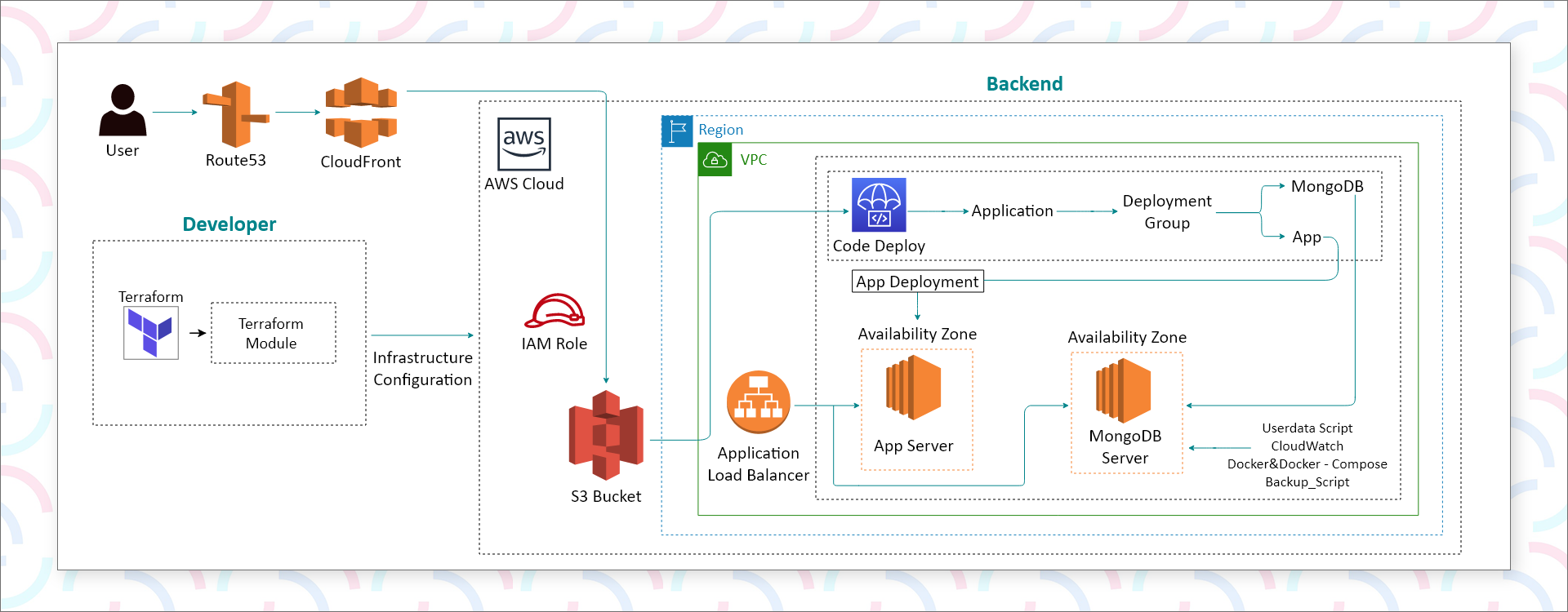Overview
Cancer diagnostics improved with AWS cloud migration, zero trust security, HIPAA-compliant infrastructure, and advanced patient data visualization.
At A Glance



Technical Stack







Client Profile
The client is a healthcare provider based in the USA with a focus on diagnosing early stages of cancer precisely. They are into integrating cutting-edge technology into their clinical practice to improve the accuracy and efficiency of their assessments, supporting the advancement of their cancer diagnosis platform.
Challenge
While establishing and administering their infrastructure, the client faced a number of technical and operational difficulties:
- Faced issues with setting up the local deployment and testing their solution. They also had complications while deploying it on AWS, which highlighted the need for a smoother AWS cloud migration experience.
- They required technical proficiency in order to automate sending logs and metrics from the host machine and Docker Daemon.
- The client planned to establish a CI/CD pipeline for automated deployment and updates of their software.
- As there was limited service support for Ansible on AWS, the client wanted a more stable Infrastructure-as-Code (IaC) tool.
- They would like detailed technical consultation on operational reporting tools to enhance their monitoring and reporting capabilities.
- The client wanted a more secure way of accessing the AWS console with Zero Trust security implementation, which would have the fewest vulnerabilities—an essential requirement for healthcare data security.
- Authentication problems in their Flask-based applications led the client to research an authentication solution with more advanced and secure capabilities.
- Lastly, the client wanted to automate MongoDB backup storage in AWS S3 for enhanced data safety and accessibility, ensuring uninterrupted workflows in clinical diagnostics.

Solution
Seaflux carried out a comprehensive local testing process, then smoothly worked through the AWS deployment for the client solution. The implementation was completely integrated into the clinical workflow for the client, confirming proper infrastructure configuration, strong data security, and compliance with health regulations—key requirements for any organization utilizing AWS in healthcare and maintaining a HIPAA-compliant infrastructure.
- Automated Monitoring with Terraform:
Seaflux developed a user data script to automatically install and configure the AWS CloudWatch Agent and Docker during instance launch. Using Terraform, system and Docker Daemon logs were centralized in AWS CloudWatch log groups for better visibility and real-time monitoring. - CI/CD Implementation:
Following a review of the customer's specifications, Seaflux responded with the implementation of CI/CD tools and automation best practices. This led to improved scale. However, it also reduced operational costs and significantly reduced the time to new deployment cycles and time to market, demonstrating the value of DevOps for healthcare in accelerating innovation - Infrastructure Modernization:
To overcome the limitations of Ansible on AWS, Seaflux replaced it with Terraform. The transition ensured better compatibility with cloud services, improved provisioning efficiency, and enabled containerized infrastructure management. The entire infrastructure migration from Ansible to Terraform was executed seamlessly, supporting the client’s broader healthcare cloud migration goals and strengthening their implementation of AWS healthcare solutions. - Advanced Monitoring and Reporting:
Seaflux deployed Grafana as the centralized monitoring and reporting tool. Grafana’s scalability, intuitive interface, and integration flexibility empowered clinicians to visualize patient data more effectively. This significantly enhanced patient data visualization, enabling clearer insights and faster decision-making. Seaflux also provided detailed documentation for smooth maintenance and future enhancements. - Enhanced Security with Zero Trust Implementation:
Seaflux analyzed the client’s existing architecture to identify security gaps and optimize access control. Using AWS IAM, Seaflux configured task-specific roles with limited privileges. Additionally, Zero Trust security policies were implemented, further reinforcing the organization’s commitment to zero trust security, along with continuous monitoring and logging to detect and mitigate potential threats proactively. - Enhanced Authentication for Flask Applications:
Seaflux incorporated AWS Cognito into the client’s Flask-based applications to provide improved authentication and authorization systems. The new implementation had secure user management capabilities, and a thorough documentation was created to enable the client’s team to manage and expand the solution. - Automated Database Backup:
A custom script was implemented to automate MongoDB backups to AWS S3. The solution not only performed scheduled backups but also validated data integrity to ensure quick and reliable disaster recovery when needed.
Key Benefits
- Enhanced Product Usability
The optimized infrastructure and automated systems improved the overall usability of the product, making it easier for clinicians to diagnose and monitor medical conditions effectively as part of their clinical diagnostics workflow. - 33% Reduction in Time to Market
CI/CD automation ensured 100% uptime and reduced time to market by 33%, allowing faster rollout of new diagnostic features. - 63% Faster Patient Recovery:
The Grafana-based visualization empowered doctors with real-time, data-driven insights, improving diagnostic accuracy and leading to faster patient recovery rates.
Develop your next idea with usGet in touch







